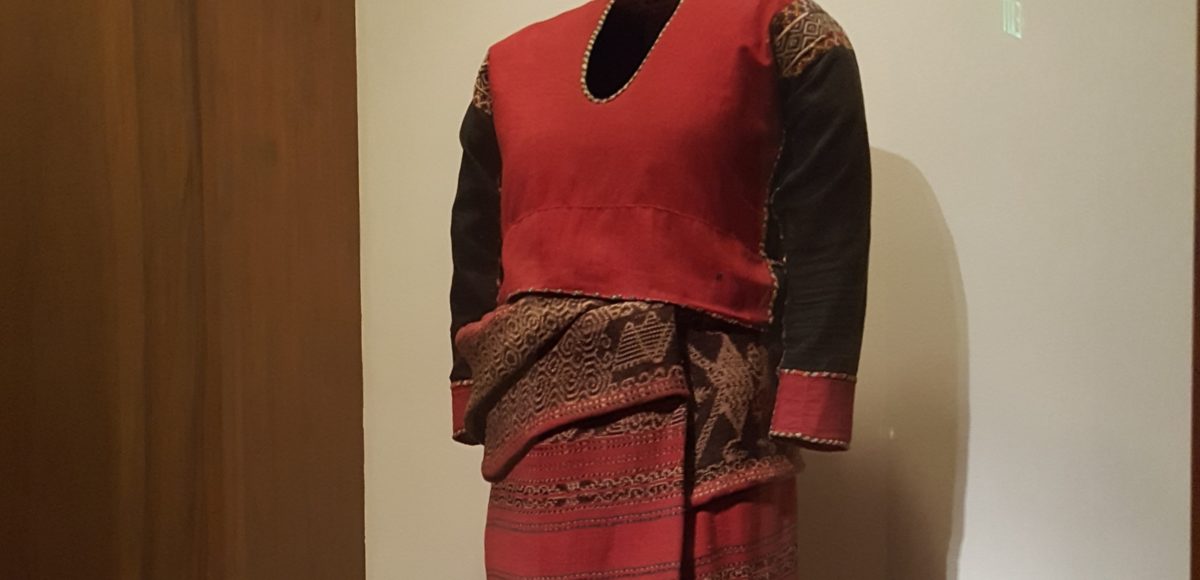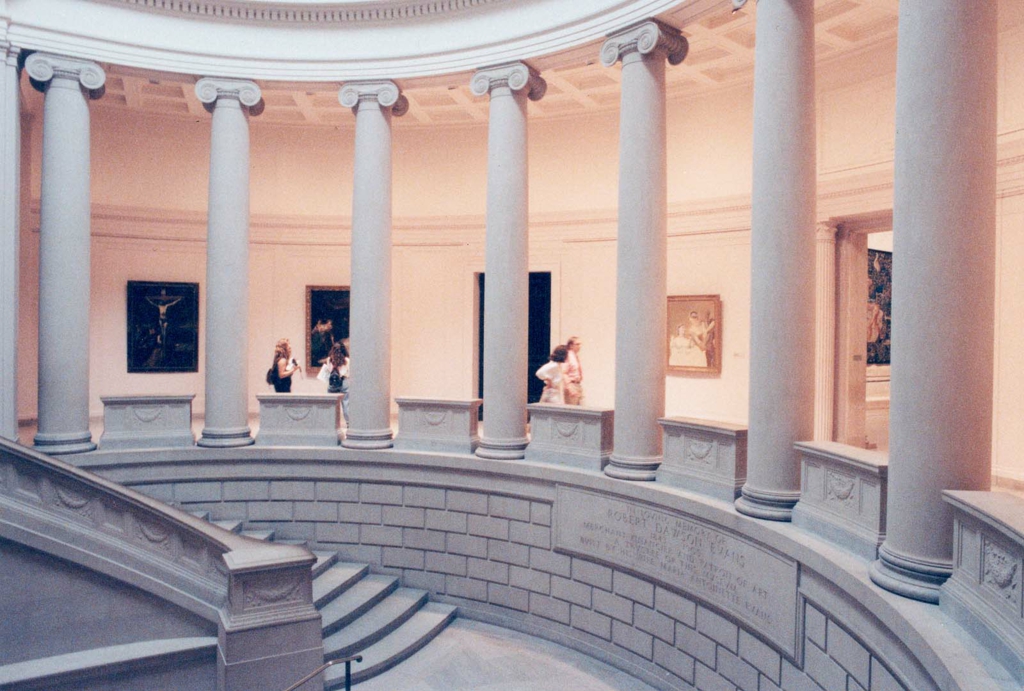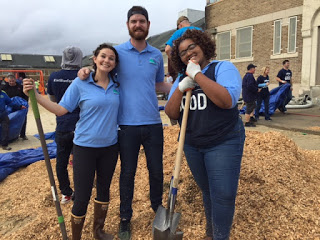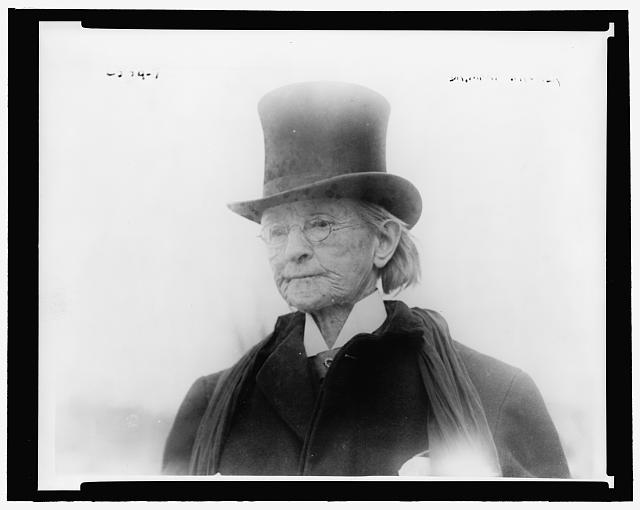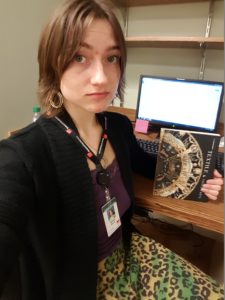
Myself, early on the job in my new office.
My internship with the Museum of Fine Arts Boston began on Monday, January 9th, in the Textiles and Fashion Arts Department. The primary focus of my time was going to be spent working with Michelle Finamore on a potential exhibit featuring fashion and gender-bending. The gender-bending exhibit, while in its very early stages, was what I looked forward to the most about my winter ‘17 co-op.
Now halfway through my co-op, I have been comfortably settled into my position and actively engaged with the project. The MFA’s mission is to conserve its diverse collections of art and artifacts, and to engage and educate visitors through a variety of learning styles and experiences. The MFA also seeks to identify and acquire new and under-recognized areas of art, and to gain cultural awareness and perspective.
Gender-bending as a subject is especially relevant right now thanks to recent social justice victories for the LGBTQ communities, the rise of transgender models in the fashion industry (and in popular shows such as Orange is the New Black), the growingly-mainstream discussions on modern feminism, the blurring divide
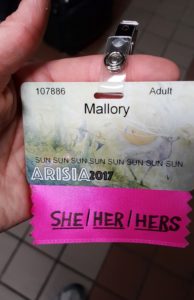
While attending ArisiaCon here in Boston, I discovered that the convention organizers had supplied pronoun ribbons to attach to our name-tags.
between men and women’s fashion even among celebrities, and the cultural shifts taking place among the millennial generation. Before I began working on the fashion and gender-bending exhibition, the subject of gender identity was already important to me. I explained to my co-workers on my first day that it’s customary at Antioch College to introduce yourself to others by your name and preferred gender pronouns. (When I restated this recently to MFA staffpeople from a different department, they blinked and asked me, “How does that even work?” I obliged with my personal example, “Hi, my name is Mallory. I go by she/her/hers.”)
Most of what I do for the project is research. I start my work day by checking in with Michelle. We touch base about recent research, possible new subject matter to pursue, and we come up with a general checklist of work that needs done or looked into. I spend time looking through books in our library, searching online archives and databases, updating our physical and computer files, and using The Museum System (TMS) to identify and organize the objects we’re hoping to include in the collection. At noon we break for lunch, and most of the TFA staff enjoy eating together at a big table in the department. It’s a cozy, relaxed environment where we can catch up, talk about our personal lives, and chat about new museum events. After lunch Michelle and I touch base again, refocus our goals for the day, and continue working. Often Michelle will invite me to sit in at multi-departmental meetings, which have served to give me a greater context for the work that the MFA does in conservation and restoration of museum objects, previews for upcoming exhibits or events, reviews of past exhibitions, and insights into other programs and general ongoings within the museum. This has been an indispensable resource for me to better understand the MFA, its mission, and examples of its work in action.
The research I’ve been conducting for the gender-bending exhibit has helped me learn new skills in not only collecting information, but also engaging with it. While going through the Vogue archives early into my co-op, I discovered a treasure trove of articles dating back to the 1890s that covered the concept gender roles, challenging gender stereotypes, discussions on feminism, and a number of other topics that I had previously believed to be unique to the modern generation. Who would have thought that I’d find an article concerning the self-assertiveness of women and their accomplishments which dates back to 1894? Or an article on men’s use of make-up from 1895? Or an article challenging the concept of the natural ‘maternal instinct’ within women, also from 1895? (I do wish I could share links to many of those articles, but access is not available to the public.) I’ve been learning how to recognize and follow the connections and influences across time to the point that we’ve reached in today’s culture,
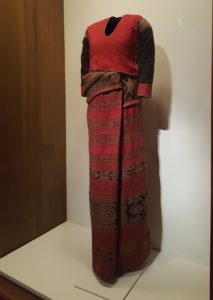
One of my favorite textile objects in the museum, a woman’s shirt and skirt or dagmai from the Philippines, about 1900, from the Arts of the Pacific section of the museum.
both in America and across the globe. I believe that through the endeavor of creating something for the public to expose these threads of connection across time, I’ve learned a lot more than I ever could have in a classroom setting. I’m not working toward an assignment for a grade; I’m creating the art of ideas and discovery through building an exhibition of art across time.
While this exhibit likely won’t premiere until the tail-end of 2018, I’ll be excited to return to the MFA when the time comes to see the final results of my contributions to this project.


